Piradio
A month ago, I was in preparation for a charity event, Relay for Life. Whether or not you agree with their practices doesn’t matter. I simply used the event as a vehicle for a new project. The idea of the event is you and a group of people camp out on a football field while doing a 24-hour walkathon. I got the bright idea of creating a portable radio station for this event, so members of the group walking with radios could all get the same music from a central base of operations on the field. This was also an idea for doing an on-location podcast.
My mission started by going to Best Buy and picking up a cheap Dynex brand 4-station FM transmitter. I hooked it up to my iPod and saw that I got maybe 60 feet of good signal from the transmitter. My goal was to try to push the transmitter to do over 100 yards. A seemingly impossible goal, but I knew since this thing had no external antenna, I could solder one on somewhere and get some improvement, right?
After taking apart the unit, I was left with this,
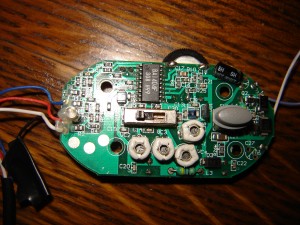
Front of the board.
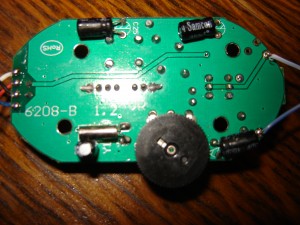
Back of the board.
I didn’t know where to start in my attempt to add an antenna. I tried googling off some of the numbers on the pcb but couldn’t make heads or tails of what I was looking at. I then got some help from an old friend by the name of TestMAD who was more savvy in this area than I was. He conferred with his father on this project, and they deduced that I would solder one wire to one of the three pads (you can see them on the bottom left of the pcb in the first picture) and I would have to solder another wire to ground, which I did by scraping away some of the green on the back of the board and soldering onto that.
Next, there was the matter of antenna size. The antenna size had to correspond with a particular frequency I would broadcast on. If I were to change the broadcast frequency, I would have to change the antenna size as well. Making it too long or too short could hurt the signal. So, I decided to keep transmission at 88.1MHz which would require an antenna around 33.5 inches long. There was next the choice of what type of antenna to use. A dipole or a quarter wave vertical antenna were suitable options.
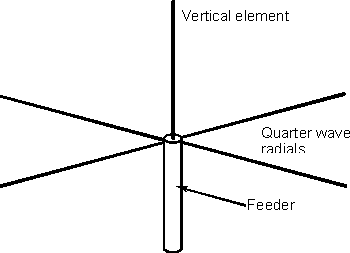
A quarter wave vertical antenna using radials (picture from radio-electronics.com).
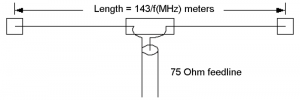
A dipole antenna (picture from wikipedia.org).
I settled on the dipole as I had an adjustable tv antenna that could fit the specifications. It was also good for portability. Later I was told that using the other antenna design could have provided more coverage, which could be something to try at a later date.
After the final assembly, I had something that looked like this,
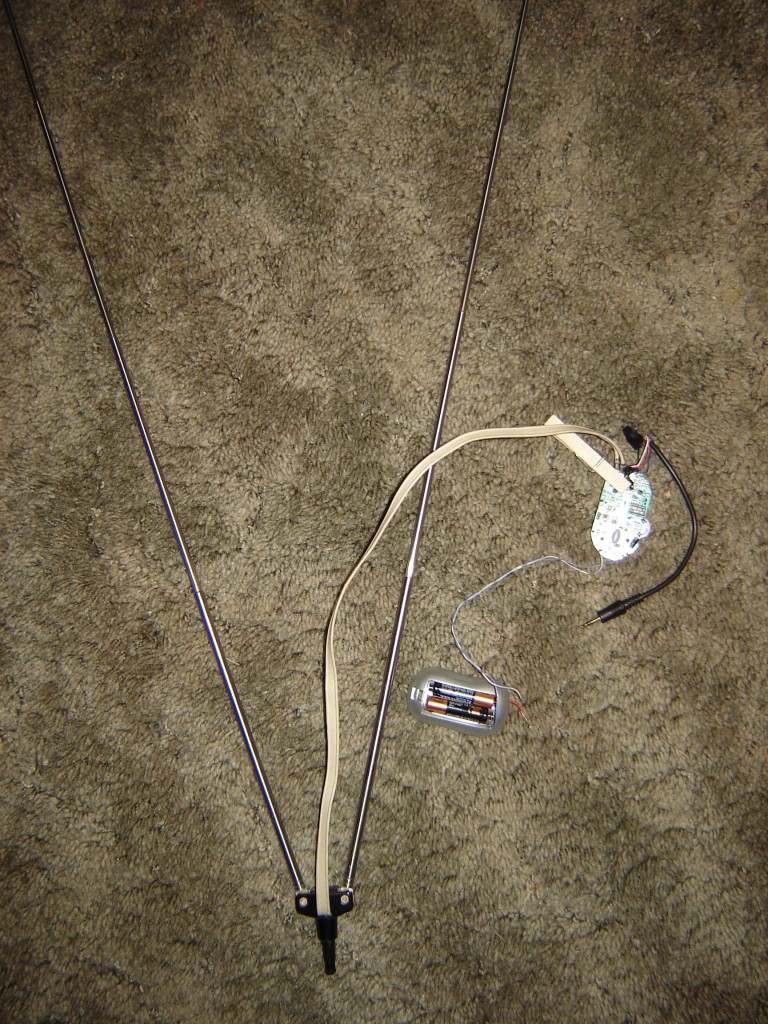
Yep, pretty classy. I might as well point out that in that picture, the antennae are too long. The length or 33.5 inches is supposed to include both the length of the actual antenna as well as the wire used to connect it to the pcb.
So on the day I was to use this, it turns out the event was pushed inside due to possible bad weather. However, this was great news in that the football field where the event was supposed to be held was completely empty. The field also had yard markers, so I could easily see how much coverage I was getting. After sizing the antennae, powering up and walking out into the field with nothing more than a battery powered radio, I got about 75 yards before I lost the signal. I didn’t hit my goal, but I squeezed a noticeable amount of coverage out of the transmitter.
If anything, I leared a few things about transmitters and antenna design. Also, hey, now I have an FM transmitter I can use just about anywhere, for anything. Maybe it’ll pop it’s way into some other projects.